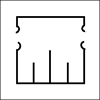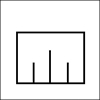A Beginner’s Guide to Custom Plastic Extrusion Design
Close attention to the design of a custom plastic extrusion can pay immediate and permanent dividends. For example:
– simpler, less expensive plastic extrusion tooling
– reduced time from inception to full scale production
– lower cost per metre of the custom plastic extrusion
– avoidance of quality issues during production
We hope that the following points help you towards these aims:
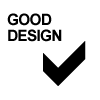 |
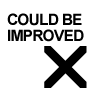 |
|
Even Wall ThicknessWherever possible, your custom plastic extrusion needs an even wall thickness throughout. Without this, satisfactory production may eventually prove to be impossible, because large differences in thickness can: – cause the flow of material through the tool to be unequal, distorting the profile |
 |
 |
Avoid Detail In Hollow SectionsMany custom plastic extrusions are hollow (e.g. tubes) and are made using a vacuum former. If internal detail is required it should be kept to a minimum as it is very difficult to calibrate or control during production. Complex detail can be achieved, however, if the profile is opened up, no longer requiring the vacuum. Hollows within hollows should be avoided completely. |
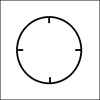
|
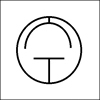
|
Mating PartsCustom plastic extrusions often need to fit mating parts, such as metal frames, a board or end-caps. Production is helped considerably if the mating parts are made available, to enable a “fit and function” test to take place. This saves time and helps to prove the drawings and tools. |
 |
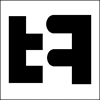 |
Length TolerancesWe recommend that, where you can, some tolerance is designed in to the required length of your custom plastic extrusion. It can be difficult and expensive to cut a perfect length during production as thermoplastics expand and contract at different temperatures. Greater accuracy is possible if lengths are cut off-line, but this adds cost. A typical length tolerance for UPVC would be +/- 1mm on a 500mm length. Longer bar lengths are generally cut with a positive tolerance only, e.g. +25mm/-0mm. The maximum length for rigid profiles is 6m, but it depends on the profile. |
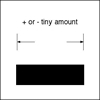 |
 |
Choosing Clear MaterialsThere are several plastics to choose from that give a clear finish. UPVC is generally least expensive and is suitable for many applications, although it is not as clear as glass. Acrylic, PS and PETG offer very good clarity, but with the latter, profiles need to be relatively simple. Polycarbonate is probably best for strength and rigidity. If clarity is the over-riding requirement then the wall thickness should be kept to a minimum in any material. See our Materials Processed page for more details. |
 |
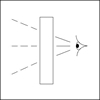 |
| In addition to Rigid Plastic Extrusions, there are other common profiles that have specific design criteria: | ||
Flexible ProfilesThese are broadly subject to the same considerations as for rigids, other than for wall thickness. Flexible plastic extrusions are extruded in a slightly different way, allowing variable wall thicknesses to be maintained. |
||
Co-extruded ProfilesDual hardness plastic co-extrusions are manufactured by feeding different materials through the same tooling. This enable rigid sections to be joined by a flexible hinge or a rigid profile to have flexible lips or flaps. It is also possible to co-extrude profiles with different coloured parts (including clear). |
||
We hope that the above introduction will help you with your custom plastic extrusion design, but please do not hesitate to contact TP Extrusions to discuss your specific requirements. To enable us to quote accurately, please can you provide the following information wherever possible :-
1. Sketch / Drawing or sample
2. Colour required – sample, RAL, Pantone or BS
3. Material required
4. Quantity required – both for samples and bulk order
5. Length(s) required

